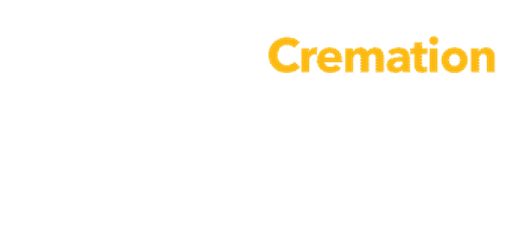
Michael Cohen
May 9, 1930 — June 30, 2024
Wynnewood, PA
Dr. Michael Cohen, co-founder of the Aspen Center for Physics and professor of physics at the University of Pennsylvania, died June 30, 2024, in Wynnewood, Pennsylvania. He was 94.
Mike was born May 9, 1930, in Manhattan, New York, to Emma Mabel Cohen and Dr. Joseph George Cohen. He attended Horace Mann School and then Cornell University, where he was a member of Telluride House and the Cornell team that won the 1951 William Lowell Putnam Mathematical Competition. After graduating Phi Beta Kappa with a B.S. in physics in 1951, he enrolled in the graduate program in physics at the California Institute of Technology.
At CalTech, Mike did his doctoral research under Dr. Richard Feynman, who’d go on to win the 1965 Nobel Prize in Physics. Feynman was notoriously picky about graduate students, and Mike was one of only 30 trainees Feynman took on throughout his career. Together, they researched the behavior of liquid helium, publishing a series of papers on the topic. In an interview with the American Institute of Physics, Feynman remembered how he’d given up on a particular set of calculations because he’d decided they were "too hard.” However, he recalled that Mike "found they weren't as hard as I thought" and cracked them. Years later, Mike recalled his time with Feynman fondly, noting not only his mentor’s attention to Mike’s research but also to his protégé’s misadventures while taking lessons at the Arthur Murray Dance Studio in Pasadena. “When I would come to his office to discuss physics,” said Mike, “he would ask for a progress report from Arthur Murray, and I tried always to have an amusing tale for him.”
Mike earned his Ph.D. in 1956 from CalTech, then stayed on to do a postdoctoral fellowship with Feynman. On the strength of his mentor’s recommendation, Mike did a second postdoc at the Institute for Advanced Study in Princeton with Dr. J. Robert Oppenheimer, father of the atomic bomb. Then – heeding the counsel of “Oppie” – he accepted a faculty position at the University of Pennsylvania in 1958.
Mike spent the next 66 years at Penn in the Department of Physics and Astronomy as an assistant, associate, full and, finally, upon his retirement from teaching in 1998, emeritus professor. A condensed matter physicist, he studied the quantum mechanics of liquid helium, as well as ferroelectrics and phospholipid membranes. He particularly enjoyed leading a problem-solving seminar for graduate students preparing for the Ph.D. qualifying exam; for this work, he jokingly described himself as “the department’s Stanley Kaplan.” He also reveled in campus politics, serving as a longtime member of Penn’s faculty senate.
In 1962, with Dr. George Stranahan and Robert Craig, Mike co-founded the Aspen Center for Physics. Alongside physics, mountaineering and rock-climbing were consuming passions for Mike, and the Center sprang from his desire to merge the inner landscape of his mind with the outdoors. At the Center, a first-of-its-kind summer physics institute, Mike’s initial role was to convince prominent physicists to come to Aspen; his first big “get” came in 1963, when he recruited Dr. Hans Bethe, the head of the Manhattan Project’s theoretical physics division who’d eventually win the Nobel Prize. Over time, 65 other Nobel laureates have followed Bethe to the Center, which has, per The New York Times, "proved pivotal in the development of the Fermi National Accelerator Laboratory, for a long time the world’s most powerful particle accelerator, and the formulation of string theory, regarded by many physicists as the most promising candidate for a 'theory of everything' that would explain all the universe’s physical phenomena."
When the Center became an independent nonprofit in 1968, Mike was elected its first treasurer. He followed this with a term as the Center’s vice president, and then, for another 48 years, served as an honorary trustee.
During his many summers in Aspen, Mike always made time for the mountains. Indeed, he said he'd first imagined the Center as "a bunch of physicists living in tents and exchanging thoughts when not fending off bears." In 1963, with two other climbers, he completed the first ascent of the north face of Capitol Peak, a 14,137-foot summit that towers over Capitol Lake in the Maroon Bells-Snowmass Wilderness. Mike also blazed several rock-climbing routes near Aspen, and at least two still bear his name: Cohen's Crown and, apropos of a physicist, Cohen's Last Problem.
Mike continued to climb into his late 80s. When a young climber witnessed Mike, then 78, scale a challenging route in Philadelphia’s Wissahickon Valley Park without a rope or any other form of protection, the climber wrote on his blog that he was “speechless. Here was a guy, older than my grandfather, crushing a 30-foot highball.”
In retirement, Mike also relished writing an introductory textbook in classical mechanics, which is available for free at:
https://www.physics.upenn.edu/sites/default/files/Classical_Mechanics_a_Critical_Introduction_0_0.pdf
Mike is survived by his sister, Vera Gottlieb; his three children, Adam (Mary), Jonathan, and Alison (Nurit); and his seven grandchildren, Will, Theo, Leah, Naomi, Vivi, Daph and Aiden. The family is especially grateful to Jeanette Edwards, who brought light to the final years of Mike’s life by providing him with loving care and companionship.
Donations in Mike’s memory may be made to the Aspen Center for Physics. If you choose to give, you can notify Mike’s family of the donation by clicking the email notification box and entering cohena@omrf.org.
Guestbook
Visits: 299
This site is protected by reCAPTCHA and the
Google Privacy Policy and Terms of Service apply.
Service map data © OpenStreetMap contributors



